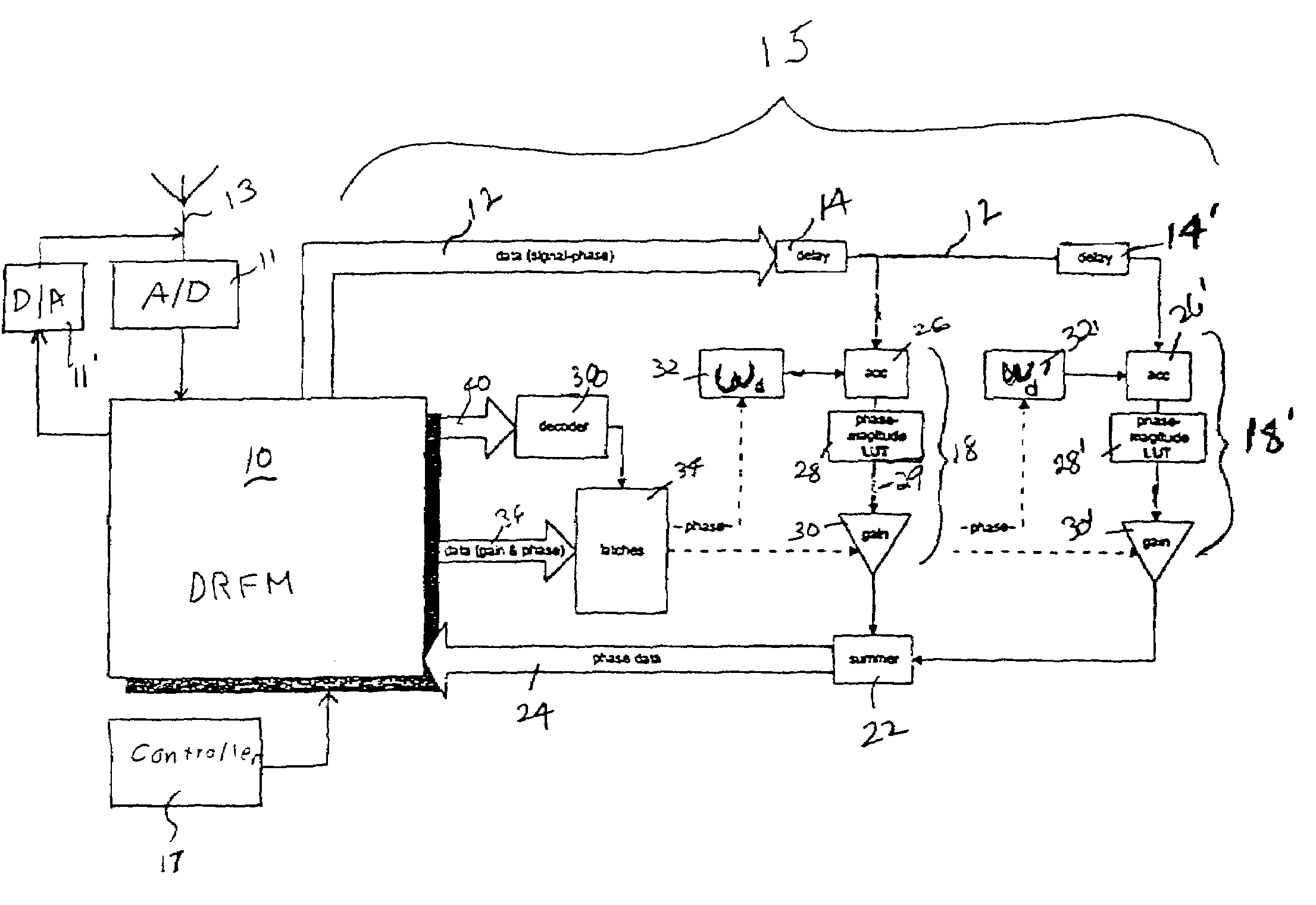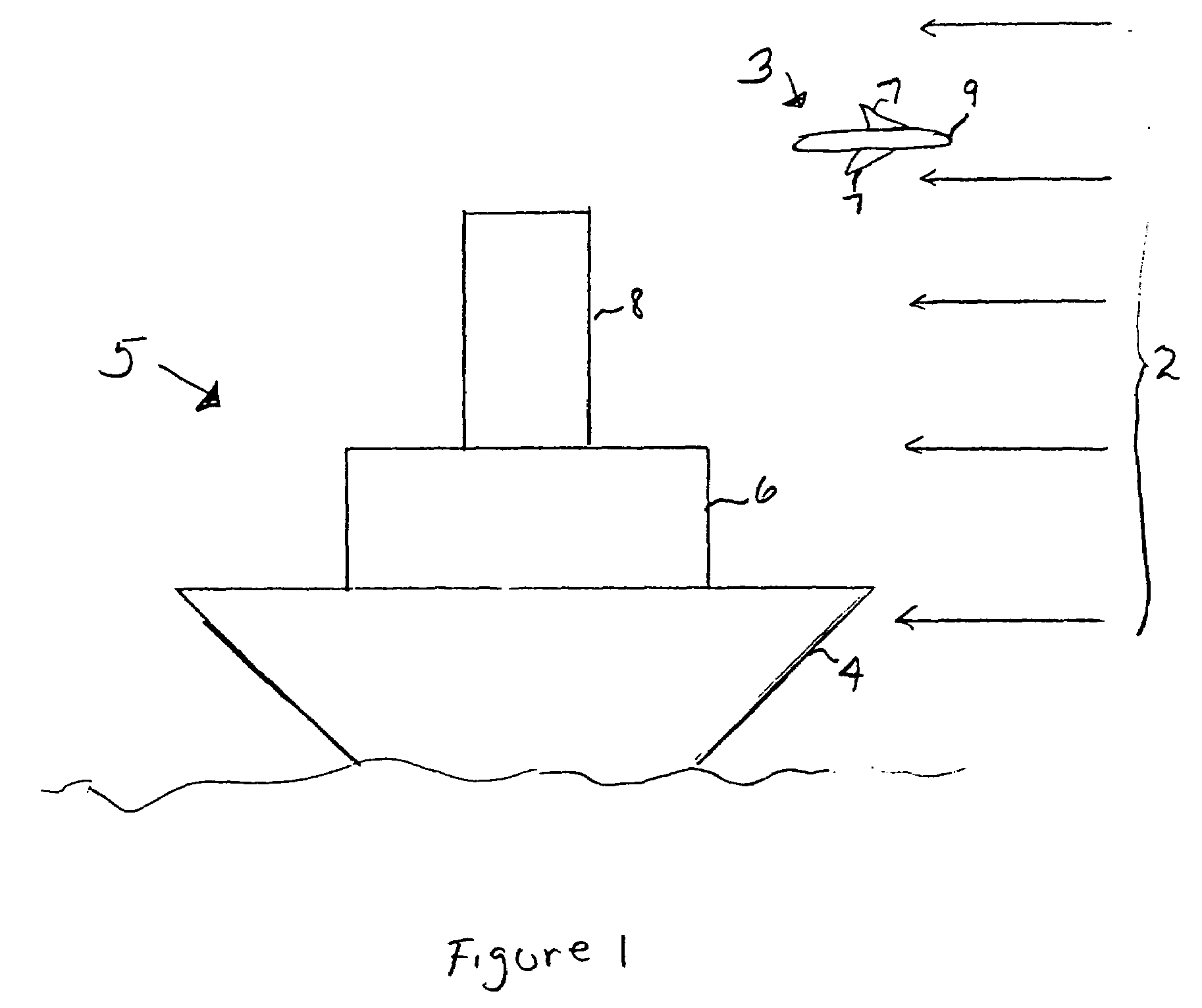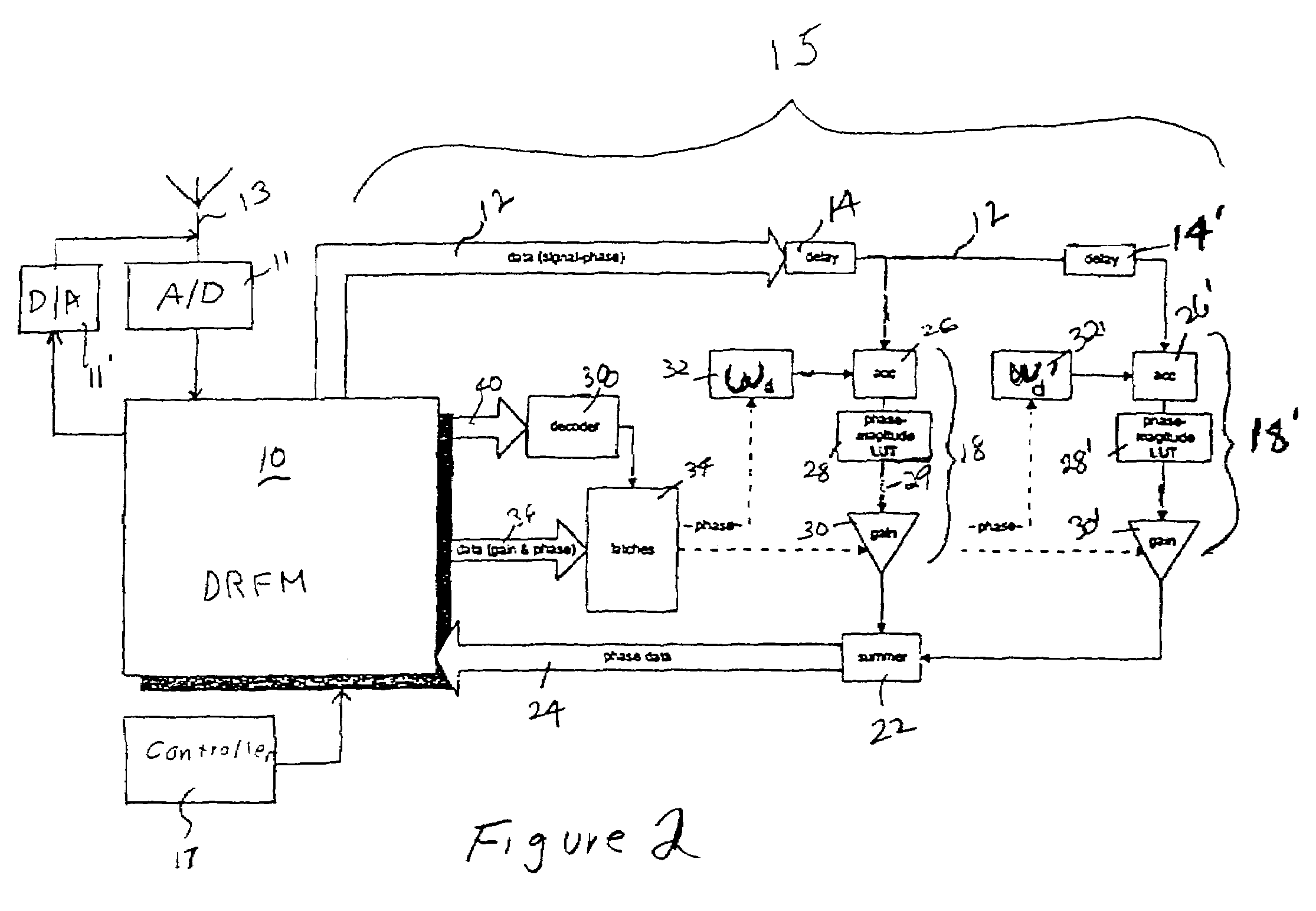Signal synthesizer and method therefor
a synthesizer and signal technology, applied in the field of signal synthesizer and method therefor, can solve the problems of limiting the usefulness of enemy plans, analog systems, and destroying enemy plans, and achieve the effect of reducing the size and cost of delay line processors and increasing the size of objects
- Summary
- Abstract
- Description
- Claims
- Application Information
AI Technical Summary
Benefits of technology
Problems solved by technology
Method used
Image
Examples
Embodiment Construction
[0015]With reference to the drawing figures, wherein like numbers indicate like parts throughout the several views, FIG. 2 shows an embodiment according to the invention. Member 13 is disposed to receive a signal, which, consistent with the non-limiting example of a radar system given above, is illustrated as an antenna, and which could be a radar pulse from a (possibly hostile) search radar. Analog to digital converter 11 digitizes the analog signal from member 13, producing a stream of digital samples which are stored in digital radio frequency memory (DRFM) 10, preferably in the form of phase samples. By phase sample, it is meant simply a digital representation of phase only. Phase data such as this does permit ultimate reconstruction of the original signal. See, T. T. Vu et al., A GaAs Phase Digitizing and Summing System for Microwave Signal Storage, IEEE JOURNAL OF SOLID STATE CIRCUITS, vol. 24, p. 104 (no. 1, February, 1989). Associated with DRFM 10 is digital circuitry 15 for...
PUM
 Login to View More
Login to View More Abstract
Description
Claims
Application Information
 Login to View More
Login to View More - R&D
- Intellectual Property
- Life Sciences
- Materials
- Tech Scout
- Unparalleled Data Quality
- Higher Quality Content
- 60% Fewer Hallucinations
Browse by: Latest US Patents, China's latest patents, Technical Efficacy Thesaurus, Application Domain, Technology Topic, Popular Technical Reports.
© 2025 PatSnap. All rights reserved.Legal|Privacy policy|Modern Slavery Act Transparency Statement|Sitemap|About US| Contact US: help@patsnap.com



